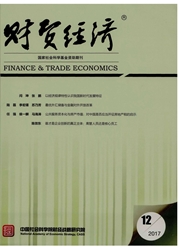

 中文摘要:
中文摘要:
本文从二元经济发展的阶段性来诠释中国经济内外失衡的原因。利用1996—2012年中国省际层面的面板数据研究发现,在刘易斯转折点到来之前,无限供给的劳动力压制了工资的增长,造成国民收入分配偏向于企业和政府部门,而刘易斯转折点到来之后,劳动报酬占国民收入的比重提高,居民部门消费潜力扩张,国民储蓄率随二元经济不同阶段呈现先上升后下降的趋势,即倒“U”型。此外,资金流量表的证据显示,在社会再分配环节,居民部门社会保险净福利为负,表明财政转移支付是“逆向”调节,遏制了当下居民部门的消费能力。因此,中国经济失衡的矫正一方面要打破劳动力市场分割,消解二元体制张力,迎来刘易斯转折点;另一方面要对企业利润进行“削峰”,合理调整政府支出结构,稳步提高劳动报酬,释放国内消费潜力。
 英文摘要:
英文摘要:
The paper estimates rural surplus labor by making use of the standard structure method, and on the basis of this, it attempts to explain the reasons for China's internal and external economic imbalances from the development stage of dual economy. This paper finds that, before the Lewis Turning Piont, unlimited supply of labor leads to constaint of wage increase, biased distribution of national income to enterprises and government departments; while after the Lewis Turning Piont, labor remunaration takes more account in national income, the consumption potential of resident department expands, and the national deposit rate shows an inverted U-shape along with different dual economic stages. Meanwhile, the flow-of-funds statements show that in the stage of social redistribution, the net welfare of resident department social insurance is negative, which reflect that fiscal transfer payment is reverse adjustment and it restrains current consumption capacity of resident department. Therefore, in one word, we should break the segmentation of labor market, and wokr through the tension of dual economy; in the other word, we should also modify the structure of government spending, steadily increase the labor income in order to release domestic consumption potential.
 同期刊论文项目
同期刊论文项目
 同项目期刊论文
同项目期刊论文
 期刊信息
期刊信息
